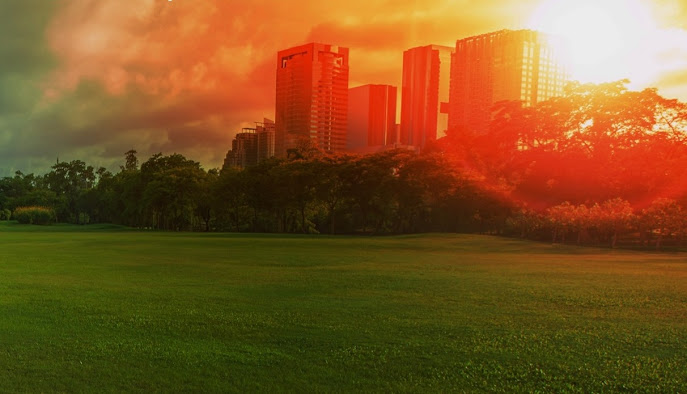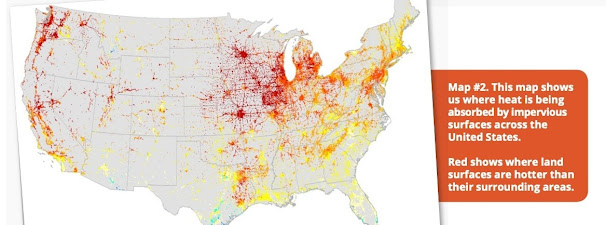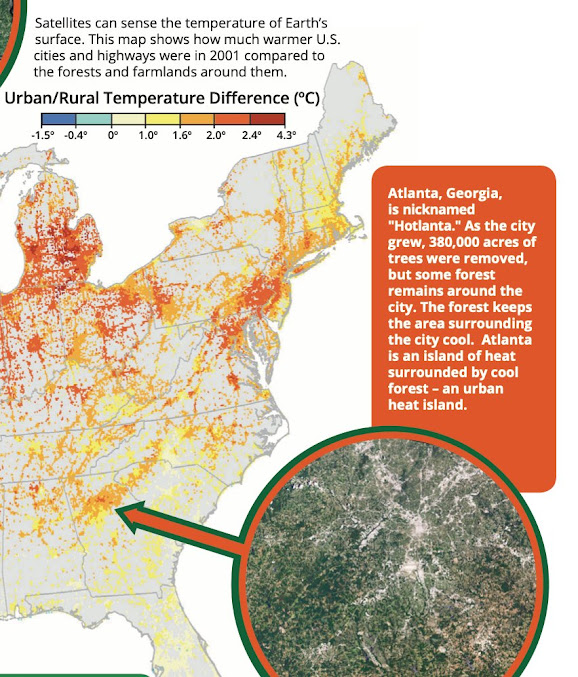LGUSD's artificial turf will create more urban heat islands in Los Gatos.
Image from nasa.gov.
With climate change, heat waves are becoming more frequent, more intense, and longer lasting.
As humans replace natural ground cover and vegetation with artificial materials (like roofs, pavements, and synthetic turf), these surfaces significantly change how the land absorbs and releases energy. These surfaces contribute to the "urban heat island effect", the phenomenon where developed areas get hotter than nearby rural areas. Additional air conditioning is required to counter-balance the increased temperatures, thereby increasing greenhouse gas emissions that contribute to global warming. This is a vicious cycle.As climate change pushes many cities towards dangerous temperatures, it's important we retain living landscapes to mitigate excessive heat.
Even the U.S. Environmental Protection Agency confirms that "elevated temperatures from heat islands can affect a community’s environment and quality of life in multiple ways:
- Compromised Human Health and Comfort
- Increased Energy Consumption
- Elevated Emissions of Air Pollutants and Greenhouse Gases
- Impaired Water Quality"




